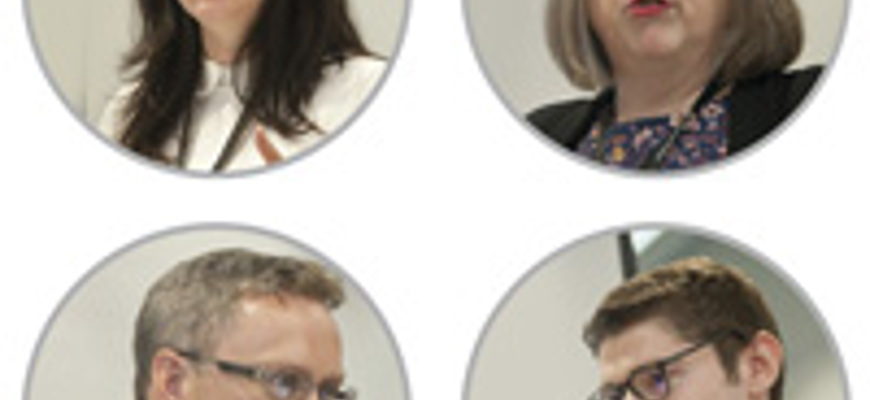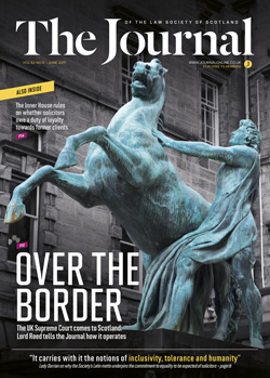Business drivers

“Without us there, achievement would have been much harder for the company.” This message in the keynote opening address by Carolyn Jameson, chief legal officer of travel search platform Skyscanner, set the tone for this year’s annual conference for in-house lawyers, which carried the title “In-house legal: create, sustain and evolve”.
Jameson’s presentation contained a fascinating tale of achievement at Skyscanner, in the four short years since her appointment. Asked to build a team from scratch, she couldn’t even establish at interview what the company wanted – and found, starting with one other lawyer, that she was “not welcomed with open arms”. Instead she had to overcome an attitude of suspicion, resistance to the idea that the business was progressing from startup to a “proper corporate company”, and a lack of awareness about risk and regulatory scrutiny.
What was her formula for success? Making her team a “business enabler” through being involved early on in planning and decision-making, and developing strong relationships with the board. That way it becomes a positive enabler of growth, building trust and respect, and gaining strategic influence within the company and the industry. Within the team there is an environment of growth and learning where each member develops personally and professionally and contributes to the work community. All good for morale.
Now eight strong, her team has helped deliver rapid business growth through a series of foreign deals that culminated in Skyscanner being bought late last year by Chinese company Ctrip for £1.4 billion. Team responsibilities now take in – on a global basis – all merger and acquisition activities, including sourcing of opportunities; regulatory investigations such as into price comparison sites; dealing with airline and other travel contracts; and the impact of product developments. With members developing specialisms, a different way of working is called for, and managing and motivating them is a further skill.
Success of course brings its own challenges. “Enjoyable but very tiring” was how Jameson described her role, as issues come up more and more frequently. Her vision and goal has become a moving target, and sometimes she feels as if she’s back at the start. But the buyout is an opportunity to learn in areas where the parent company is more advanced, and it’s “important to make sure that we stay on top of things”.
Teambuilding
Further perspectives on building and leading an in-house team were offered in the panel session that followed, featuring Norma Shippin of NHS National Services Scotland, Alastair Maclean of investment managers Baillie Gifford & Co, and Fraser Bell of Aberdeen City Council.
Shippin, who has seen growth from six lawyers when she started in 1984 to 64 today, recalled the threat of privatisation in the mid-1990s, in response to which she drew up a strategic plan that resulted in her team becoming fee-earning, covering its costs through charges to individual health boards.
Client care is built in, with an established feedback system through annual visits and a survey. The four separate legal divisions (litigation, property, employment and contracts) have a training programme, staff retention is good, and the team has the advantage of understanding the public sector ethos and strategy.
Maclean, who unusually has held senior posts in private practice and both public and private sector in-house, offered the novel suggestion, to many listeners at least, that the in-house/external adviser distinction is beginning to feel out of date, with a changing or merging of roles. But his opening line was that the opportunities for in-house lawyers are endless; they have a fantastic skillset; and they need to have the courage and confidence to use it.
As for their role, he quoted a colleague who asked: “Why talk of other people as the business? We are the business.” His own brief on joining had been to assess whether his team was fit for the next 10 years, given the increased need for specialisms and the changing nature of pension schemes. Yet he cheerfully said he had “no idea” what the future might look like, though “On one level, the future is in-house.” Brexit, a possible further independence referendum and the General Data Protection Regulation would mean “a field day for lawyers”; however, they should not think as traditional lawyers but in terms of their business and be recognised as part of it.
The changing operating model of external law firms brings its own implications, as they disaggregate work in a way that didn’t happen 10 years ago. They have to be trained to think outside the box, and senior in-house lawyers “really need to strategically lead our teams in a variety of ways”.
Bell, in post as head of legal and democratic services only since summer 2015, had begun by undertaking surveys of both employees and customers, asking what his team could do to improve, and building a picture of its strengths and weaknesses which he then presented to the legal management team, securing a consensus on what needed to change.
The next step was gaining buy-in from customers and staff – communication with employees was very important, and different approaches might work with different teams. A key feature of his plan was to provide more opportunities to move and become involved in high-level work.
Results to date have seen the best customer satisfaction results in corporate governance for 2016, the highest employee engagement scores for 2016 of any council, staff development, the reintroduction of traineeships, and a “leaner and less complex” team structure with more exposure to high-end work. Structure is only part of the formula, he reminded us: it is important to have the right people, commercially aware and passionate about first class service. But with an increasing strain on finance, a focus on cost recovery and the team generating its own income, the right structure can help achieve that.
Full day
All that, and we were only at morning coffee break. Space does not permit similar treatment of the sessions that followed – Jamie Gardiner, advocate, on his litigation risk analysis model (featured at Journal, June 2016, 12); Craig Kennedy and James McMillan of Maclay Murray & Spens on protecting your organisation against cybercrime, and defending a regulatory prosecution; a contract law update from Graeme MacLeod of CMS, who deserves a special mention for keeping the audience alert in the post-lunch session by asking us to vote over how we thought the court had decided his selected cases as he described each one, before revealing the result.
DLA Piper’s Hazel Moffat discussed the potential big issues from Brexit for in-house lawyers. “Heavy legal input early on” should be provided if companies are changing their strategy and structure as a result, was one point she made; and while “paralysis” exists in some organisations pending the negotiations, advisers can start to put together a framework and methodology for looking at key areas. She also flagged up that the UK Government is “more open than normal” to specific business issues being raised.
Finally, Nina Barakzai of Sky presented on “In-house counsel and ethics – agents of change?”, dealing with the tricky question of when an in-house lawyer should say “no” to their business on ethical grounds. Different advisers will have a different focus, she acknowledged, and those who deal less with law and more with strategy run more risk of losing sight of absolute legal obligations. Lawyers may find themselves between those who want legal advice and those who want the business view. She herself finds she is “having to refuse more and more”.
As a starting point, in addition to understanding relevant codes of conduct and the commercial environment, “Be sure you understand what your top executives are doing,” she advised. If you feel uncomfortable about a situation, ask yourself why, and what tests can you apply that might help. Are there alternatives you could feel comfortable with?
Barakzai recommended social media forums as a possible source of advice, while cautioning over confidentiality issues. And there are ways of delivering your answers – be measured, and do it carefully. She called herself a “fixit” rather than a technical lawyer, but you need the latter in your team as well.
Winding up, chair and ILC convener Graeme McWilliams told us that the Society is developing in-house ethics guidance, which he hoped would be out soon. Thus ended a very full but informative day – except for some welcome refreshments, and the Rising Star presentation, a reminder of the success with which even the ILC’s younger members are already facing up to the challenges of in-house practice today.
In this issue
- Neutrality policies in commercial companies
- Court IT: the young lawyers' view
- Human rights: answering to the UN
- Galo and fair trial: which way for Scotland?
- Secondary victims in clinical negligence
- Reading for pleasure
- Opinion: Alan W Robertson
- Book reviews
- Profile
- President's column
- Twin tracks to completion
- People on the move
- Court of the nations
- Second time around
- How to avoid a summer tax scorcher
- Humani nihil alienum: a call to equality
- Sheriff commercial procedure: count 10
- Taking a pay cut: fair to refuse?
- Fine to park here?
- Enter the Bowen reforms
- Home grown
- Limited partnerships: a new breed
- Salvesen fallout: the latest round
- Gambling in football – the Scottish perspective
- Scottish Solicitors' Discipline Tribunal
- Changing sides
- Business drivers
- CCBE comes to Edinburgh
- "Find a solicitor" gets an upgrade
- Law reform roundup
- Thoughts on a frenetic year
- Check those bank instructions
- Fraud alert – ongoing bank frauds identified
- AML: sizing up the risk
- Master Policy Renewal: what you need to know
- Without prejudice
- What's the measure of a ruler?
- Ask Ash






